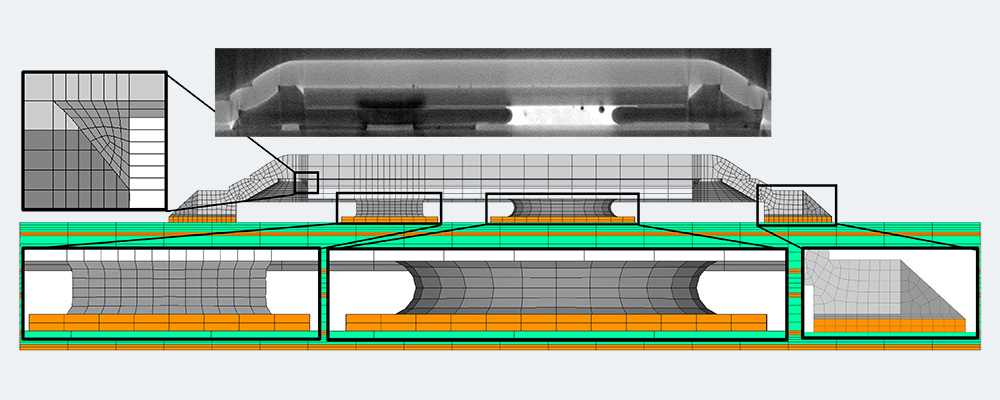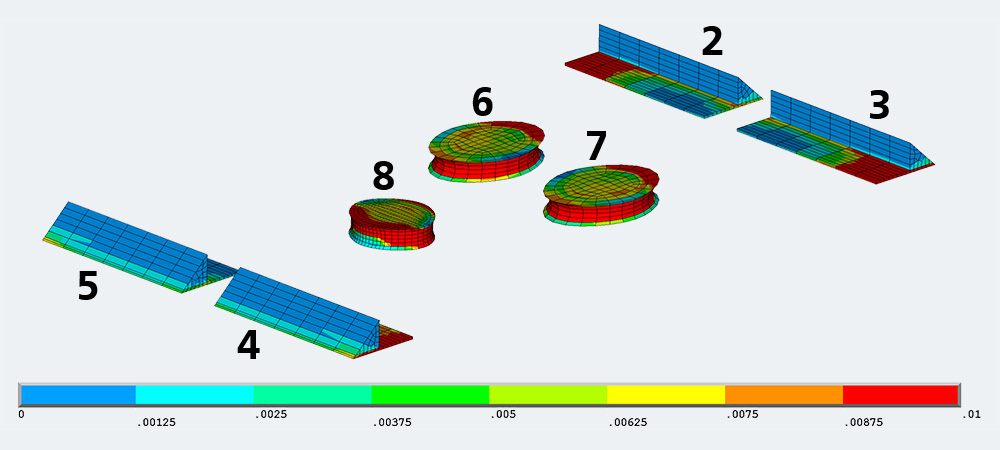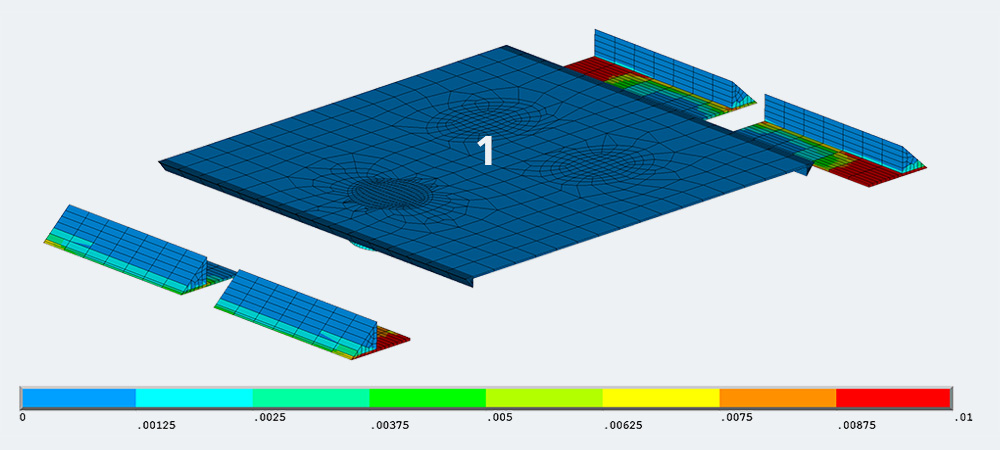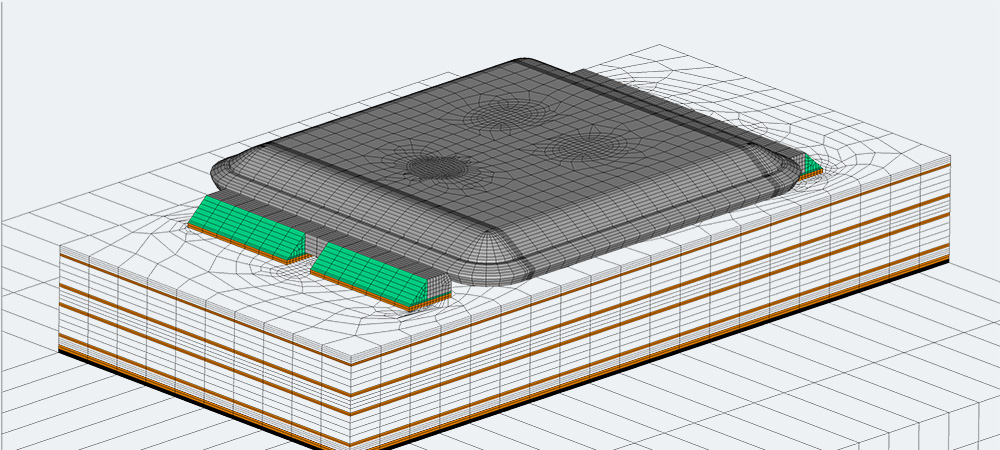The power densities in electronic assemblies continue to increase during e-mobility and decentralized energy supply. Accordingly, short-cycle self-induced thermal loads are gaining dominance over long-cycle environmental influences. For realistic reliability considerations, it follows that the boundary condition of a homogeneously heated overall assembly is increasingly faulty. This can be remedied by simulating the heat propagation within the assembly, for example during a power cycling test. In addition to the spatial temperature gradients, the temporal temperature gradients are also calculated. As a result, the temporally non-linear effects of viscoelastic polymers and creeping solder alloys can be considered and calculated locally.
Thermo-mechanical simulation
Topic



